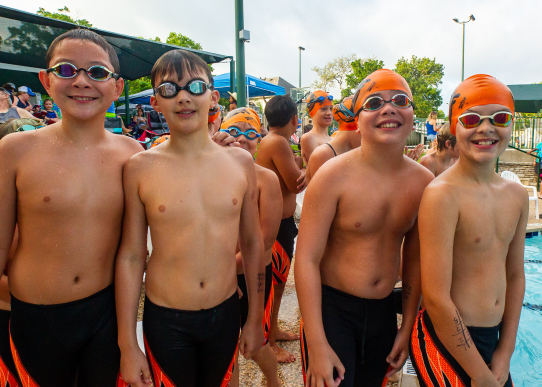Your son or daughter really loves competitive swimming and has reached a point where they are one of the better swimmers in their age group. How do you know if they are ready for year-round swimming?
How can you tell if your child is ready for year-round swimming?
Stepping up to year-round swimming is a noticeable difference in a variety of ways:
- Considerably more serious, not necessarily in a bad way. It’s just that swimmers on year-round teams are more focused on the competition aspect of the sport than the social aspect.
- There is a difference in the length, intensity and frequency of the workouts. Two hour workouts and Saturday workouts aren’t uncommon.
- Traveling farther away to meets is common, especially if your child qualifies for state or zone championships.
- During the cold weather months, indoor pools are typically used and in the summer you’ll experience some 50 meter pools.
- Meets are 2+ days long with each day being a long day. Some meets will have preliminaries in the morning and finals in the afternoon.
If your child is serious about pursuing a competitive swimming career and you’re supportive, the best and only way is year-round swimming on a good team with good coaches.
Preparing for a Year-Long Swim Team
The South Shore Sails swim team shared an incredible article from The American Club Swimming Association with some great tips.
“The summer league program is such a short season and each swimmer strives to improve from the past summer. Their main goal is to improve their performances and have a successful season each summer. Also, most parents want children to participate in a healthy activity with intangible benefits offered by a team sport and goal setting.”
Essentially, learn, practice, and have fun. Successful youth swimming means that, first and foremost, kids are encouraged, motivated, and have a great time. If they are discouraged by their ability, the length of distance swims, or poor stroke habits, keep kids encouraged and involved in many activities so they can continue to develop for the rigor of a year round team. The article continues,
“Swimmers should be taught and trained in a progressive manner. Each step should include continued stroke development. Other important areas of competitive swimming should be introduced as the swim progresses. If a youngster is having fun while he learns, he will show the greatest amount of improvement.”



